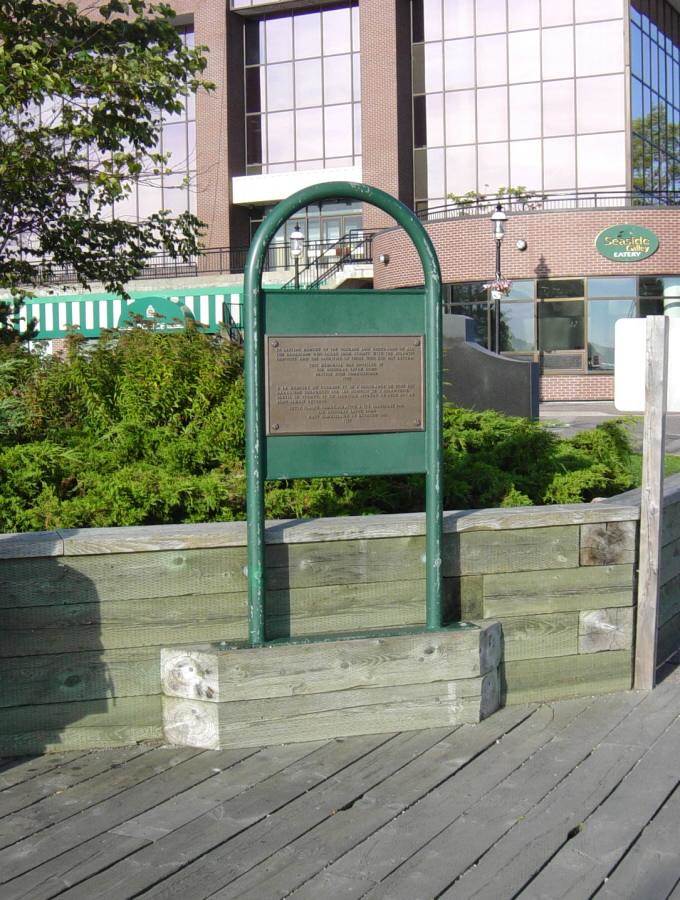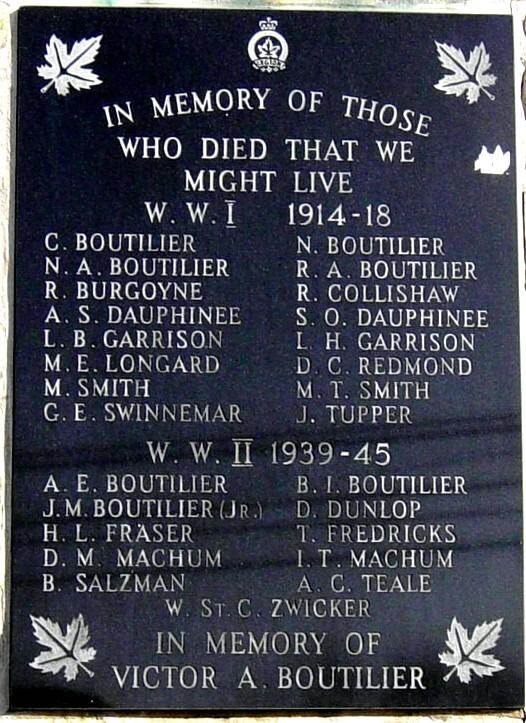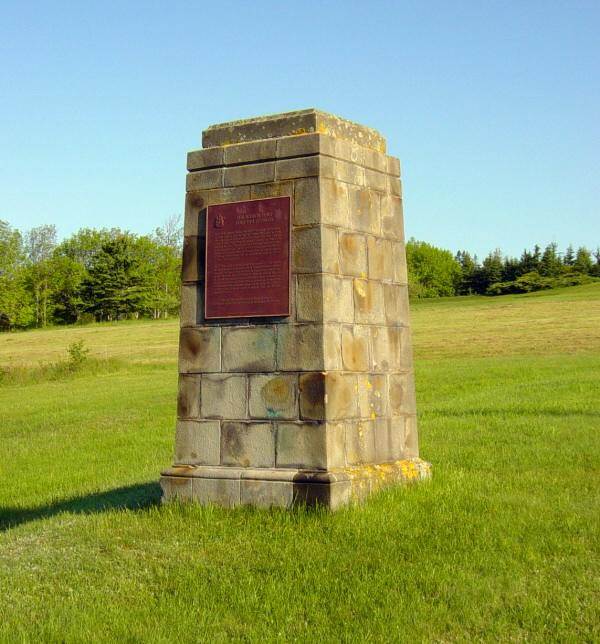
Scotch Fort
1629 – 1632
Photographs of
Monument
Port Royal
Annapolis County
Nova Scotia
Located on the north side of the highway,
opposite the Port Royal Habitation National Historic Site
GPS location: 44°42’49″N 65°36’35″W
Google map
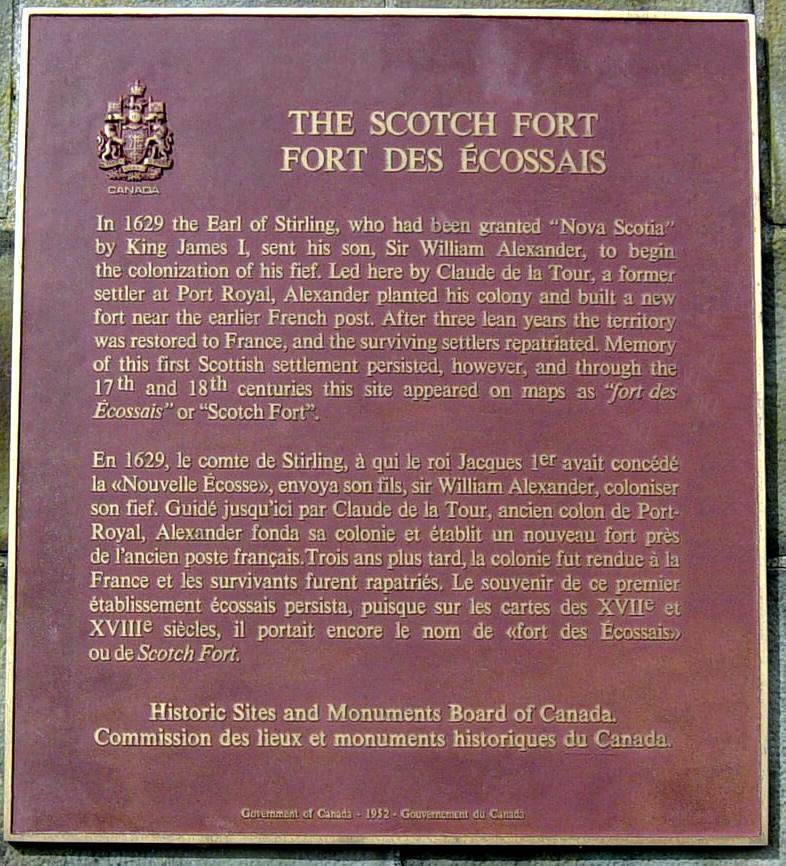
Plaque date: 1952
Photographed on 31 October 2003
William Alexander, Earl of Stirling (c.1577-1640)
[Not to be confused with Sir William Alexander (c.1602-1638)]
Alexander persuaded King James VII/II that the only way to get Scots to emigrate
was to give them a new Scotland comparable to New France and New England;
and the king conveyed the royal wish to the Council of New England and obtained
from the latter the surrender of all their territory north of the Sainte-Croix.
Thereupon the king immediately instructed the Scottish Privy Council to prepare
a grant of this territory for Sir William Alexander. The grant was signed on
10 September 1621 (o.s.), making Sir William, on paper at least, lord proprietor of
the region now known as the three Atlantic Provinces and the Gaspé peninsula
– to be called for all time New Scotland or Nova Scotia.
Sir William Alexander (c.1602-1638)
[Not to be confused with William Alexander, Earl of Stirling (c.1577-1640)]
On 4 February 1628/29 Alexander, the Kirkes, and others obtained a
monopoly of the trade to Canada. While the Kirkes went off to capture
Quebec, Alexander joined forces with Sir James Stewart, Lord Ochiltree,
helped him build a fort at Port de la Baleine (now Baleine) in Cape Breton,
and then, under the guidance of Claude de Saint-Étienne de La Tour,
proceeded to Port-Royal. Here, in the summer of 1629, Alexander built
a new fort in which he decided to pass the winter, sending back his ship for
additional supplies and colonists. He also dispatched Claude de La Tour
with an agreement for his father, Sir William, to sign, the terms of which
conferred the title of knight-baronet and a large grant of land on Claude
and his son Charles de Saint-Étienne de La Tour, in return for their
assistance and allegiance. This agreement, slightly modified,
was duly signed by Alexander’s father 30 April 1630.

Photographed on 13 June 2003
Also see: Sir William Alexander monument, Halifax
Thanks to Mrs. Hannelore Fisher.
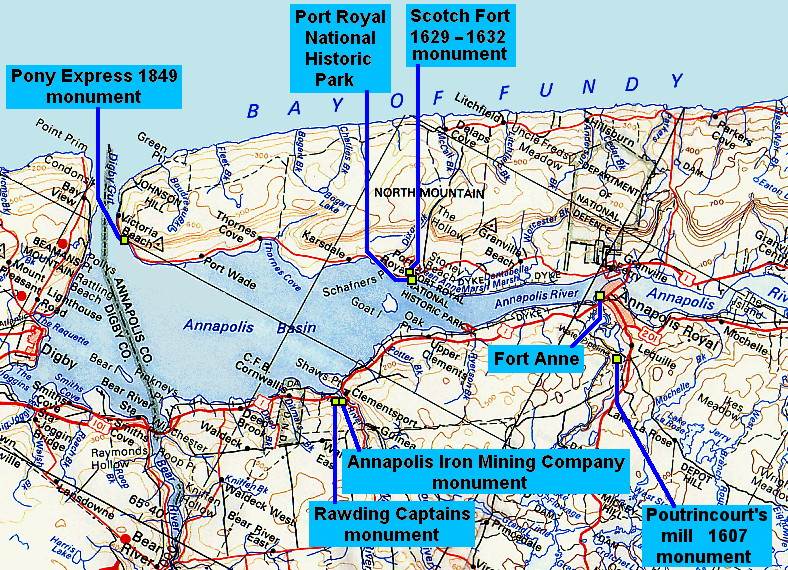
Map showing the location of the monument commemorating the
Scotch Fort 1629-1632, Port Royal, Annapolis County, Nova Scotia.
Roads are shown as they were in 1978. Except for Highway 101, the
layout of the roads in 2006 has not changed much from that shown here.
Links to Relevant Websites
Father and Son on Different Sides of Conflict, for a While,
On the Trail of the Scots of Annapolis County
Saint-Germain-en-Laye treaty, signed on 29 March 1632
|

